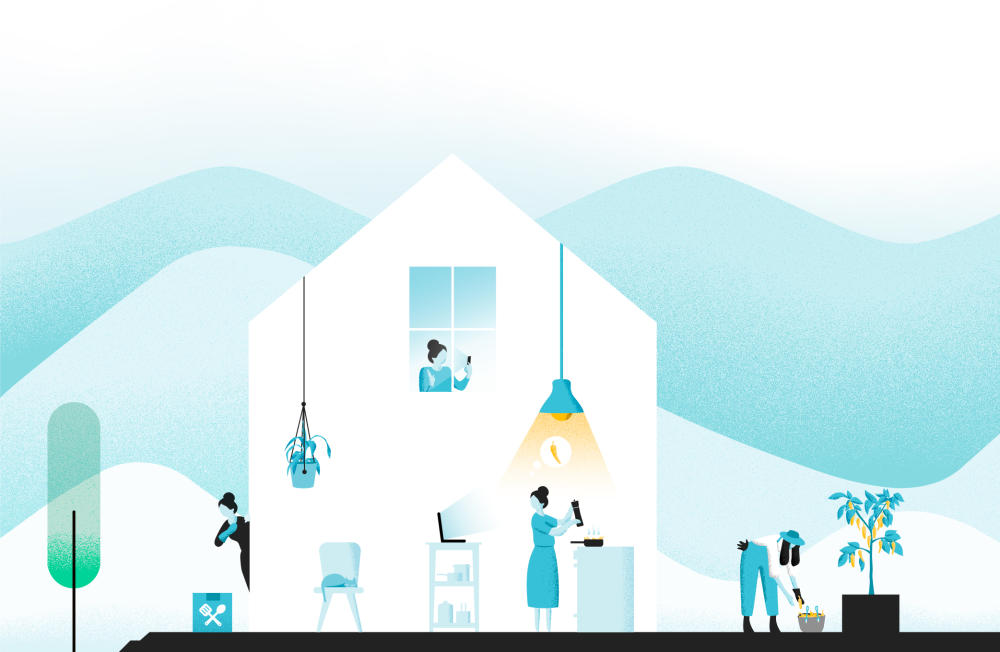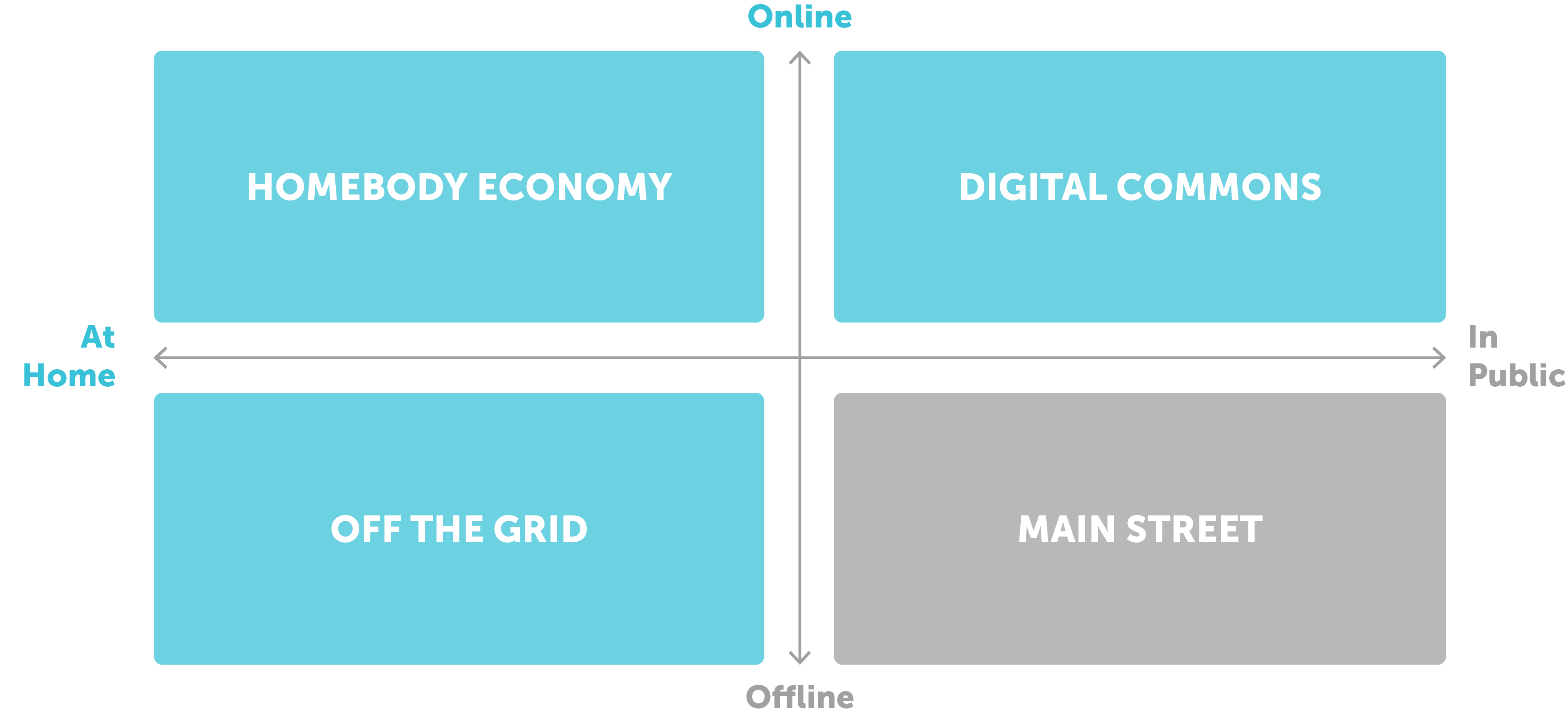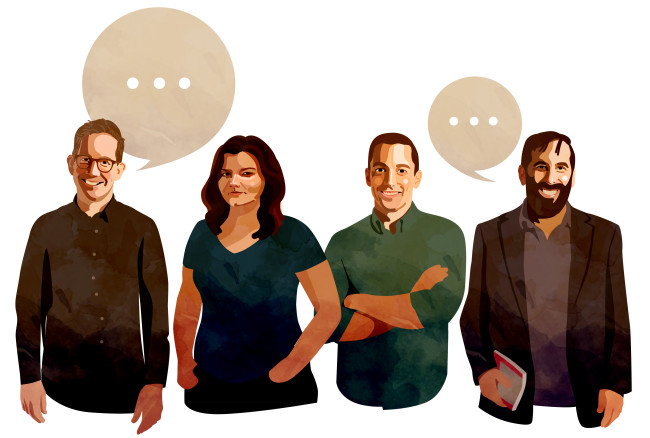
This post is the first in a two-part series exploring how the coronavirus pandemic has changed consumer behavior, and what businesses can do to respond. This is the second part.
The world has fundamentally changed; the question is no longer whether the coronavirus pandemic will have permanent impact, but of how great it will be. While the true scale of COVID-wrought change remains to be seen, there are clear patterns in the ways people responded this spring that can show us the directions consumer behavior will take.
The new normal is no longer new. People have found ways to carry on with events, business, and social life. Tactics changed but the underlying patterns of behavior did not. Instead what we’ve seen is the acceleration of various pre-COVID cultural trends; specifically, trends that already live at the intersection of two highly relevant spectrums: technology and social distance.
Quarantine isolates us, but the internet brings us back together. We’ve learned to be more online (seniors learned how to Zoom cocktail hour with friends or adult children and clubs learned how to throw parties on Instagram Live) but also to be more independent (how to cook, garden, and cut our own hair). We became hyper-connected socially and culturally through the internet at the same time that we withdrew from certain aspects of commercial life—the supply chain, restaurants, retail, fashion, travel.
If we look at these forces as a matrix, with relative “onlineness” as one axis and social isolation the other, the quadrants reveal salient clusters of trends in consumer behavior, each with insights and implications for how businesses can adapt to this moment. These themes will determine how consumers behave during the pandemic, and the extreme ways they pull on habits and social norms will permanently bend behavior long after we have a vaccine.

Digital Commons
The pandemic has forced a hyper-adoption of digital tools—both straightforward ones like video conferencing that simply help people connect, and more niche services that allow us to accomplish activities together from a distance. The biggest story of the early days of the pandemic in the U.S. was the virtual tidal wave of video-based socializing. Life quickly went online, with weddings, funerals, dating, bar mitzvahs, birthdays (young and old), bachelorette parties, and proms hosted over Zoom (or its less frequently name-checked competitors). Organizations also made the switch; religious services perhaps reach the widest swath of people (both urban and rural), but political conventions, college pre-matriculation events, theatres, wineries, and restaurants also drew consumers in, digitally.
There was a small cultural renaissance with concerts and DJ sets on Instagram Live, queer nightlife, and an emerging variety show format in nightlife and entertainment. These events had an unofficial, unpolished vibe that felt intimate; there was a sense of community that got people excited.
As Zoom fatigue set in, apps that help friends and family play board games in the browser or stream media together got popular, and the timely Animal Crossing release provided a fresh setting for social interaction; parties, dating, fashion and art, popup events, and even work. In the same vein, Silicon Valley’s Metaverse made strides, with many concerts and festivals happening within platforms like Fortnite and Minecraft, and NASCAR sim racing became a hit on Fox.
Implications for Business
The internet’s ad-supported business model has been broken for a long time; it’s led to a devaluing of digital content and a reluctance among consumers to pay for digital offerings. But during periods of quarantine and social distancing, the internet is the primary, if not the only, place we buy things. As people become more accustomed to spending money for virtual events and services, as they have begun to, there will be an opportunity to rewrite the rules of the internet as a commercial space.
Virtual reality might not take over public life permanently, and the digital divide is still an issue both in the US and around the world, but the pandemic is making power users of everyone with access, and communities have organized to get the slowest adopters online. Digital literacy has soared, and the market for digital offerings is expanding to just about everyone.
Growing Trends in This Space
• Virtual spaces, people, and commerce
• Online events and experiences
• E-sports
• Digital surveillance
• Zoom socializing (new)
Off the Grid
This space is about products and behaviors that help us be less dependent on the economy or supply chains, especially for those basic physical needs at the bottom of Maslow’s hierarchy. There’s a reason toilet paper was the defining product of March 2020, and a reason people then turned around and “panic bought” bidets. Crises reveal our vulnerabilities, and the pandemic showed people all the products and assumptions of modern civilization they depend on, and forced them to reckon with how they’d do without.
In these circumstances, regaining a little control feels good. There were functional reasons to hoard beans, learn to bake bread, and plant a garden as lines grew at food pantries across the U.S. and food insecurity loomed worldwide, but from a cultural perspective, these behaviors give us a sense of control and independence that is emotionally fulfilling as well. Whether out of real economic necessity or zeitgeist-driven choice, this belt-tightening comes at a formative time for Millennials and Gen Z, who are already financially conservative, and some of whom already lived through the 2008 recession. Consider how the Great Depression and Second World War influenced the frugal spending and saving habits of the Greatest and Silent Generations for life.
Quarantine and social distancing also undermine one of the fundamental pillars of American marketing—keeping up with the Joneses. Why buy a cute outfit, or the new Nikes, if no one’s around to see you wear them? Why buy a new car if you have nowhere to drive it? People have shaved their heads, grown their beards, and enjoyed letting go of some of the ritual demands of social appearance.
Implications for Business
Though this may sound dire, these behaviors aren’t necessarily the death knell for business that they might sound. When people stop buying bottled water, they buy water bottles. When they stop shaving, sales of beard grooming supplies rise by 40%. But it does imply a different model, a different pace of purchasing activity, and one we urge you not to dismiss. The opportunities here are not as easy to grasp as they might be for Digital Commons, but like a victory garden, they are fertile and uniquely promising.
If people are teaching themselves how to fish, then now’s the time to get into fishing supplies. Google reports that searches for “DIY” are up 80% since last year, and many of the retail categories with over 100% growth are for various kinds of kits, tools, and supplies. If your business model relies on frequently recurring purchasing behaviors (like fast fashion), it’s worth exploring some new ones.
Growing Trends in This Space
• DIY and meal kits
• Prepper culture (hoarding toilet paper, luxury bunkers, Tesla’s bioweapon defense mode, guns)
• Deurbanization (not just to suburbs but going rural)
• Comfort culture (athleisure, crocs, casual work dress codes, loungewear) and anti-fashion or unfashion (from normcore to scumbro)
• Flight shaming, anti-plastic, packaging-free, fashion resale, and other consumption-reduction movements
• FIRE (Financial Independence, Retire Early), tiny homes, #vanlife, digital nomadry, intentional communities, and other lifestyle independence movements
We hope you've enjoyed this virtual tour of Digital Commons and Off the Grid. In Part II, we look at the Homebody Economy and Main Street. Be well!
Illustration by Santiago Caicedo




